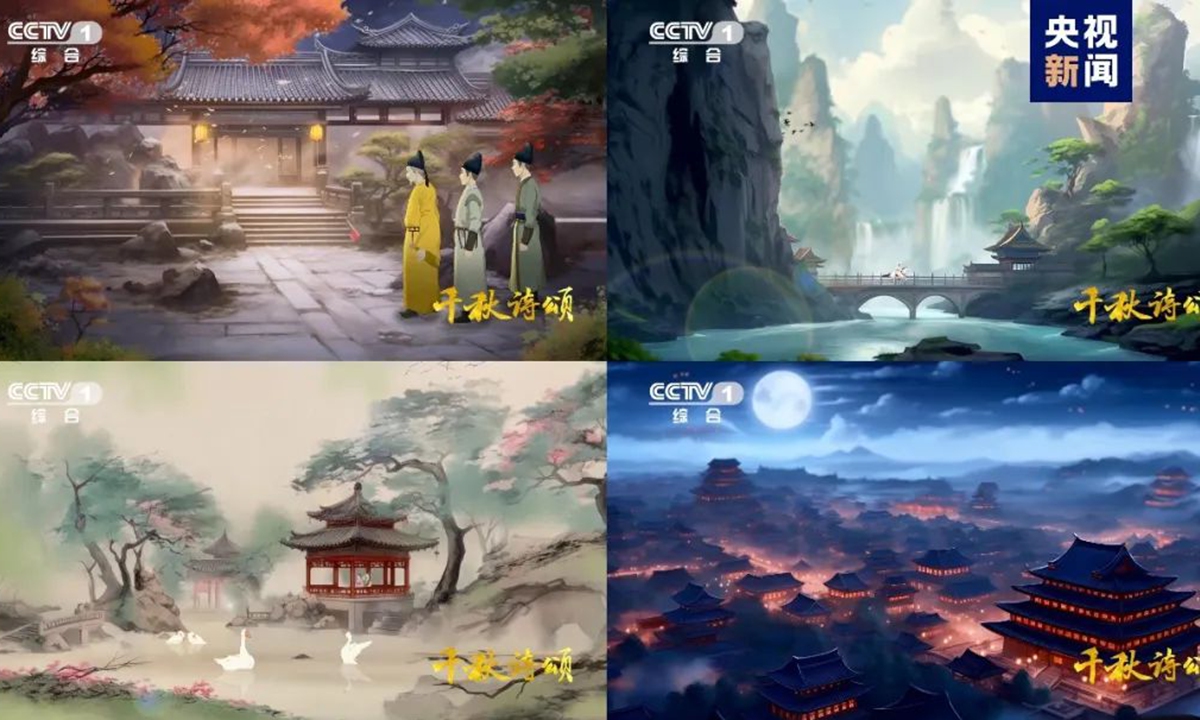
Screenshot of Qianqiu Shisong
China's first artificial intelligence-generated animation Qianqiu Shisong was put on air via CCTV-1, part of China Media Group (CMG) on Monday, which illustrated scenes and figures described in China's ancient poems and verses done by generative AI, the Securities Times reported.Industry observers said that the broadcast of the first AI-generated animation program may accelerate the application of text-to-video program-making in China, further optimize the production process for making film and drama, game development and advertising, said the Securities Times report.
Qianqiu Shisong includes 26 episodes in total, each lasting about seven minutes in length. It was made by the generative-AI model co-developed by Shanghai Artificial Intelligence Laboratory and the CMG, under the brand of CMG Media GPT and launched in July 20, 2023.
CMG Media GPT can learn Chinese ancient poems and verses by "being fed" with the massive data of past CCTV poem-relevant programs, said researchers from the laboratory, noting that the technology significantly compressed the animation making time.
"AI will not replace human but increase human's working efficiency. For example, our team used to make on episode each month, but now we can make three episodes each month with assistance from AI," said the director of the Qianqiu Shisong, whose name is not revealed.
Followed by the released of text-to-video model Sora by the OpenAI, price of related stocks in Chinese capital market remained high.
On Chinese social media platform Sina Weibo, many netizens said that animation generated by AI was a smart approach to popularizing Chinese culture as the cutting-edge technology can inject new life into ancient poems and verses.
Other netizens noted that it was a valuable opportunity to practice China's AI technology but Chinese AI researchers should see the gap between world-leading AI models and theirs, and make more efforts to catch up.
Global Times



